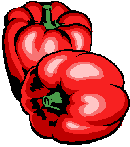
Also call: Chinese Water
Chestnut, Matai,

Arrowhead,
Calthrop, Haew, Kuwai, Ling gok, Sha gu
 | DESCRIPTION
|
A grass-liked plant growing to a height of 1.5m. It
has a round corm of tuber which has a shiny dark brown skin plus a
paper-like outer skin. The flesh is crisp and sweet.
 | HISTORY AND ORIGIN
|
Originated in the tropics of Africa, Asia and
Australia. Chinese water chestnut was used in the ancient time for
both medicinal and culinary use.
 | BUYING AND STORAGE
|
Choose water chestnut that rock hard with brownish-black
colouring. Avoid softness and wetness. Water chestnuts can be
kept in a jar of water and refrigerated up to 2 weeks.
 | PREPARATION AND USE
|
Wash and pee. Can be cut in half, slice or
dice. Use raw or cook in salads, stir-fry, stuffings and vegetables
dishes.
 | NUTRITIONAL INFORMATION
|
Good source of vitamin C.
 | MAJOR NUTRIENTS |
-
-
SERVING SIZE: 100 grm
-
| * ENERGY: |
420 |
kj |
* IRON: |
1 |
mg |
| * PROTEIN: |
2 |
grm |
* POTASSIUM: |
|
grm |
| * FAT: |
|
grm |
* CALCIUM: |
|
grm |
| * CARBOHYDRATE: |
26 |
grm |
* VITAMIN A: |
|
ug |
| * DIETARY FIBRE: |
|
mg |
* VITAMIN B: |
|
mg |
| * SODIUM: |
30 |
mg |
* VITAMIN C: |
12 |
mg |
 | VARIETY
|
CHINESE WATER CHESTNUT: Shiny
dark brown skin with crisp white flesh.
TRAPA BICORNIS: Also called Two
horned Water Calthrop. May be poisonous if eating raw.
ARROW HEAD: Similar to Chinese
Water chestnut but it has a pale yellow colour skin.
|




